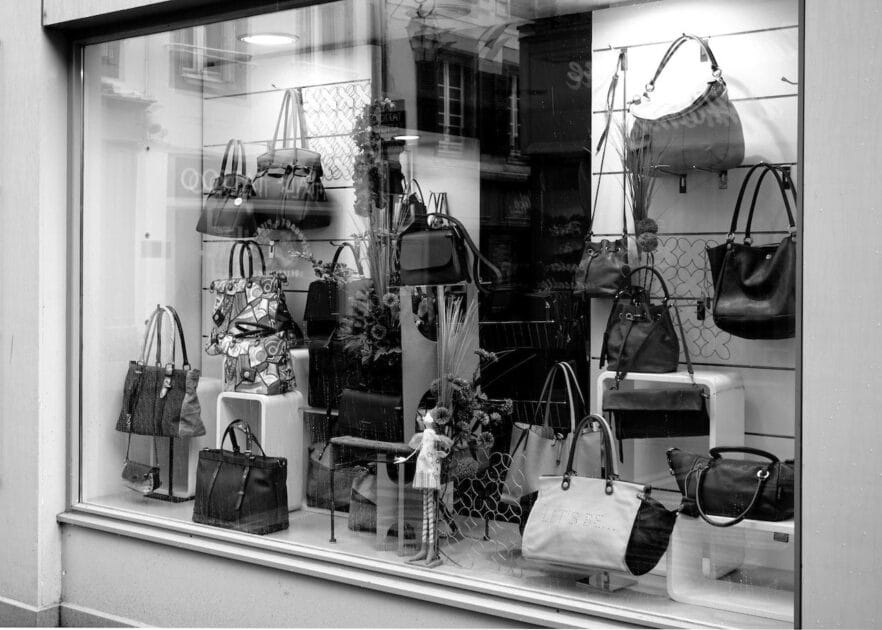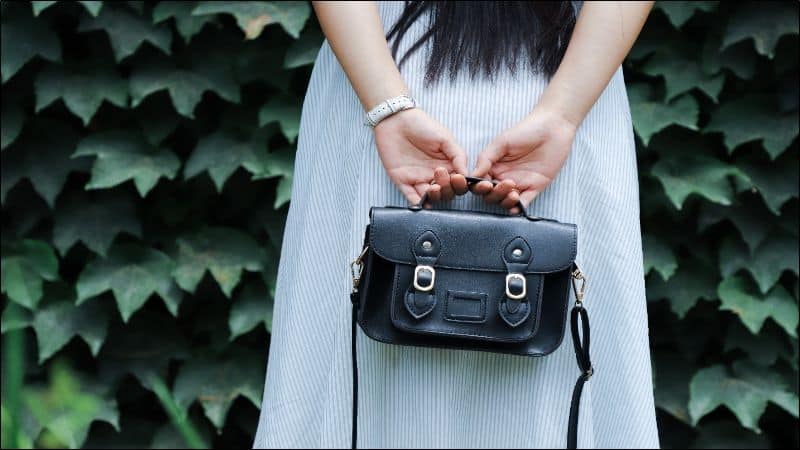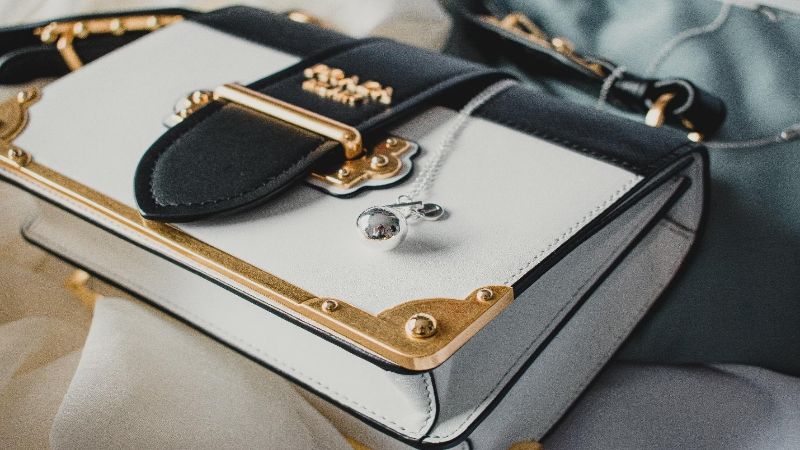Ever looked at your favorite handbag only to notice it’s starting to peel and crack? It’s heartbreaking, right? But don’t toss it out just yet! There’s a good chance you can breathe new life into that beloved accessory.
Why handbags peel and crack
Your once-perfect handbag is peeling and cracking, and you’re probably wondering why. The life expectancy of a handbag can be directly linked to material quality, frequency of use, and maintenance practices. Understanding these elements is key to preventing damage.
Material Quality and Construction
Cost-Effective Materials
- Faux leather is prone to peeling
- Low-cost materials deteriorate faster
Stitching and Lining
- Poor stitching can lead to stress cracks
- Weak lining material may contribute to interior cracking
Environmental Factors
Exposure to Elements
- Heat can dry out and crack materials
- Cold weather makes materials brittle, leading to cracking
- Sunlight can fade and weaken the structure, causing peeling
Moisture and Chemical Damage
- Water exposure leads to peeling
- Chemicals in cleaning agents can strip away finishes
Usage and Storage
Overfilling and Weight
- Excess weight strains material and seams
- Overfilling bags stretches leather, contributing to peeling
Improper Storage
- Storing without support can cause folds and cracks
- Not using dust bags lets in dirt that abrades the surface
By pinpointing the causes behind why your handbag is peeling and cracking, you’re better equipped to take proactive steps in maintenance and care, preserving the elegance and longevity of your beloved accessory. Now, let’s delve into the specifics of how you can reverse the damage already done and get your handbag looking as good as new.
Assessing the extent of damage
Before diving into repairs, you need to evaluate how much your handbag has suffered. Start by cleaning your bag gently. This will give you a clear view of where the material is peeling or cracking. Next, examine the areas around zippers, corners, and handles. These spots often endure the most wear and tear.
Identify the material of your handbag. Is it genuine leather, faux leather, or another type of synthetic? This will determine the products and methods you’ll use for restoration.
Check for color fading or discoloration. If the peeling has led to a loss of color, note that color correction will be part of the repair process.
Assess the peeling severity. Is it just surface peeling or is it deep enough to expose the inner layers of the material? Deep peeling might require more than a cosmetic fix.
Test the flexibility of the material. Stiff, cracked areas could require conditioning before any attempt to repair the peeling.
Lastly, gauge your own ability to fix the damage. Some issues might be manageable at home, while others could benefit from a professional’s touch. If your bag is designer or holds sentimental value, consider seeking expertise to avoid causing further damage.
Remember, the goal is to restore your handbag’s beauty while maintaining its integrity and extending its lifespan. If you’re not confident about the repair, professional help is a worthy investment.
Choosing the right repair method
Once you’ve assessed the damage, it’s crucial to pick a repair method that aligns with your handbag’s material and the extent of the peeling. There’s a couple of options, depending on whether you have a leather bag or one made from synthetic materials.
For Leather Handbags:
- Leather Glue: A standard solution for peeling leather. It’s transparent and forms a strong bond without stiffness.
- Leather Filler: Great for deeper cracks. This paste fills in the gaps before you re-dye the area.
- Leather Dye: If there’s color fading, apply a matching leather dye after glue or filler.
For Synthetic Materials:
- Fabric Glue: Works well if the synthetic layer has lifted but the fabric beneath is intact.
- Patch Method: You’ll need a material that matches the bag for an inconspicuous fix.
« How to Banish Musty Smell in Leather Handbags for Good
Designer Handbag Costs Unveiled: The True Price Behind Luxury »
When handling the repair, clean your work area and lay out all supplies you’ll need. If using glue or filler, apply sparingly to avoid oversaturation; a thin layer is usually sufficient. Smooth out any excess before it dries to avoid lumps.
Test a Small Area First to ensure there’s no adverse reaction with your handbag’s material. If your handbag has a unique texture or pattern, practice your technique on a comparable material to gain confidence. When re-dying, always choose the closest shade possible to the original color of your bag.
Remember, choosing the right repair method is not just about fixing the current issue. It’s about ensuring the longevity and maintaining the aesthetic of your handbag without compromising its original design. Keep in mind that professional repairs, though costlier, might be a worthwhile investment for high-end designer bags or those with significant sentimental value.
Repairing a peeling handbag at home
Repairing your handbag at home can be a cost-effective way to extend its lifespan. Before you begin the repair, ensure you have leather glue or fabric glue, leather filler if necessary, and leather dye that matches your bag for leather repairs. For synthetic bags, have fabric glue and matching patches ready.
To get started with leather items, first clean the surface thoroughly with a leather cleaner. This step ensures that the glue and filler adhere properly. Apply leather glue to the peeling areas carefully; this acts as a temporary fix. Leather filler works well for deeper cracks or areas where the surface has significant damage. After filling and sealing, use leather dye to blend the repair seamlessly with the rest of the bag.
For synthetic handbags, the process is slightly different. Begin by cleaning the peeling area with a damp cloth. Cut a patch that matches your handbag and place it over the peeling section. Secure the patch with fabric glue, making sure to smooth out any air bubbles. Allow ample time for the glue to dry before using your handbag again.
Throughout the process, it’s crucial to let each layer dry completely before applying the next. Work in a well-ventilated area and use gloves to protect your hands. Testing your repair materials on a hidden part of the bag first can prevent potential damage to visible areas.
Remember, while small peels and scuffs are often easily handled at home, extensive damage might need professional attention. The key is to care for your handbag regularly and address peeling as soon as it starts, preserving both the function and fashion of your cherished accessory.
Seeking professional help
Sometimes a DIY fix just doesn’t cut it. If you’re facing extensive damage or you’re dealing with a luxury item, you might want professional assistance.
Luxury handbags often require an expert’s touch. High-end designers typically offer repair services. You should check your warranty or contact customer service to find out the best course of action. Remember, unauthorized repairs on designer handbags can void warranties.
For non-designer bags, look for a local cobbler or a leather goods repair shop. These professionals have the right tools and experience to handle complex repairs effectively. Before you commit:
- Ask for a cost estimate; some repairs can be almost as expensive as buying a new bag.
- Request before-and-after photos of previous work.
- Inquire about the repair process and the materials they’ll use.
Repair shops can often address issues that are beyond the scope of home repair kits, such as:
- Large tears or splits
- Severe peeling that affects a significant portion of the bag
- Structural damage to the handbag
They can also help with preventative care, like:
- Adding a protective layer to avoid future peeling
- Restoring the color and finish of your handbag
Don’t hesitate to ask questions and get a second opinion if something doesn’t feel right. Repairing your handbag is an investment in its longevity and beauty.
Conclusion
You’ve got all the tools and tips to give your peeling handbag a new lease on life. Whether you’re tackling the fix yourself or seeking a pro’s touch remember that taking care of your handbag is about preserving its charm and extending its journey with you. Don’t hesitate to reach out for professional help when needed—it’s worth it for that bag you just can’t part with. Here’s to many more outings with your refreshed and revitalized handbag by your side!
Frequently Asked Questions
Can I repair a peeling handbag at home?
Yes, minor peeling on handbags can often be repaired at home using a leather repair kit. However, for more severe damage or luxury handbags, you might want to consider professional repair services.
Should I attempt to repair a luxury designer handbag myself?
It is not recommended to repair luxury designer handbags yourself as unauthorized repairs can void the warranty. Always check with customer service or warranty terms before attempting any repairs.
Is it worth repairing my handbag?
Repairing your handbag is generally worth it as it is an investment in maintaining its longevity and aesthetic appeal. This is especially true for high-quality or designer handbags.
How do I find a professional to repair my handbag?
Look for a local cobbler or a leather goods repair shop with good reviews. Ask them for a cost estimate and for before-and-after photos of their previous work to ensure quality service.
What can professional repair services do that I can’t at home?
Professional services can handle complex issues such as large tears, severe peeling, structural damage, color restoration, and adding protective layers which are beyond the scope of most home repair kits.











